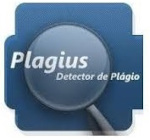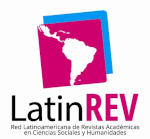ENGLISH LANGUAGE TEACHING FOR CHILDREN IN LIGHT OF THE MONTESSORI METHOD: a didactic proposal
DOI:
https://doi.org/10.47180/omij.v5i3.320Keywords:
Teaching for Children; English Language; Educational Method; Teaching Proposal.Abstract
This paper addresses the importance of a more specific study on English teaching for children from the socio-interactional perspective of the Montessori Method. Emphasis is placed on the need for practical experience in the classroom and internships so that the teacher in training understands the needs and dynamics of different age groups. A research gap is observed regarding the application of the Montessori Method to English language teaching for children at UEPB. The text underscores the significance of continuous development of innovative and effective pedagogical practices in language teaching, focusing on the autonomy and individual development of the student. The general objective is to examine the roles of the English language teacher aligned with the Montessori Method. The central research question is about the underlying roles that the teacher can play in this context. Objectives include theoretical considerations about English language learning as a second language, identification of the teacher's roles in the Montessori context, and the proposal of an innovative teaching approach based on Montessori Method materials. The adopted methodology is qualitative-interpretative, utilizing bibliographic research to deepen the understanding of the teacher's roles in the context of the Montessori Method.
Downloads
References
ALARCÃO, I. Professores Reflexivos em uma escola reflexiva. 5. e.d. São Paulo, Cortez, 2007.
ALMEIDA FILHO, N. Transdisciplinaridade e Saúde Coletiva. Ciência & Saúde Coletiva. II (1-2), 1997. DOI: https://doi.org/10.1590/1413-812319972101702014
ANDRADE, M. M. Introdução à metodologia do trabalho científico: elaboração de trabalhos na graduação. São Paulo, SP: Atlas, 2010.
OLIVEIRA E PAIVA, V. L. Aquisição de Segunda Lingua - 1. ed.- São Paulo: Parábola Editorial, 2014.
CHUN, J. A Survey of research in second language acquisition. The Modern Language Journal, n. 64, 1980, p. 287-96. DOI: https://doi.org/10.1111/j.1540-4781.1980.tb05194.x
COOPER, R. L. What do we learn when we learn a language? TESOL Quarterly, v. 4, 1970, p. 312-20. DOI: https://doi.org/10.2307/3585760
CORDER, S. P. The Significance of learners' errors. IRAL, v. 5, 1967, p. 161-70. DOI: https://doi.org/10.1515/iral.1967.5.1-4.161
DE BOT, K.; LOWIE, W.; VERSPOOR, M. A Dynamic Systems Theory approach to second language acquisition. Bilingualism: Language and Cognition, n.10, v.1, p.7-21, 2007. DOI: https://doi.org/10.1017/S1366728906002732
HARMER, J. The practice of English language teaching. 4ed. London: Pearson Longman, 2007.
HALLE, M. Phonology in a generative grammar. Word, v. 18, p. 54-72, 1962. DOI: https://doi.org/10.1080/00437956.1962.11659765
HOPPER, P. Emmergent grammar. Em M. TOMASELLO, The New Psychology of Language. Mahwah: Lawrence Erlbaum, 1998. pp. 155-75
KRASHEN, S. D. Second Language Acquisition and Second Language. Learning. Oxford: Pergamon, 1981.
LANTOLF, J. P.; PAVLENKO, A. (S)econd (L)anguage (A)ctivity Theory: Understanding Second Language Learners as People. In: BREEN, M. P. (org.) Learner Contributions to Language Learning: New Directions in Research. Londres: Longman, 2001, p. 141-158.
MONTESSORI, M. The Discovery of The Child, Madras, Kalakshetra, 1948.
MONTESSORI, M. Pedagogia Científica: A descoberta da criança. São Paulo: Livraria Editora Flamboyant, 1965.
MONTESSORI, M. A descoberta da criança: pedagogia científica / tradução de Pe. Aury Maria Azélio Brunetti – Campinas, SP: Kírion, 2017.
NEVES, Rita de Araújo, DAMIANI, Magda Floriana. Vygotsky e as teorias da aprendizagem. UNIrevista (UNISINOS), São Leopoldo, v. 1, n.2, p. 1-10, 2006.
PAIVA, Vera Lúcia Menezes de Oliveira. Aquisição de Segunda Língua. São Paulo: Parábola, 2014.
PIMENTA, Selma Garrido; ANASTASIOU, Léa das Graças Camargos. Docência no ensino superior. Docência no ensino superior, 3. ed, 2002.
SAPORTA, S. Applied linguistics and generative grammar. In: VALDMAN, A. (Ed.). Trends in language teaching. New York: McGraw-Hill, 1966.
SILVA, R. F; FERREIRA, T. S. F. Construção identitária do professor em formação inicial: reflexões de um graduando extensionista no contexto do ensino remoto. In: V Jornada de Línguas e Linguagens & I Jornada Internacional de Línguas e Linguagens, 2021, Campina Grande - PB. Caderno de trabalhos completos da V Jornada de Línguas e Linguagens & I Jornada Internacional de Línguas e Linguagens. Campina Grande - PB: Revista Letras Raras, 2021. v. 10. p. 277-295.
TAYLOR, B. F. Toward a theory of language acquisition. Language Learning, n. 24, 1974, p. 23-35. DOI: https://doi.org/10.1111/j.1467-1770.1974.tb00233.x
Downloads
Published
How to Cite
Issue
Section
License
Copyright (c) 2024 Open Minds International Journal

This work is licensed under a Creative Commons Attribution-NonCommercial-NoDerivatives 4.0 International License.
The authors declare that any work submitted, if accepted, will not be published elsewhere, in English or in any other language, and even electronically, unless it expressly mentions that the work was originally published in the Journal.













